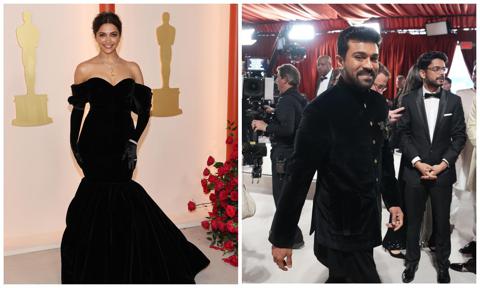
The use of a red carpet for special occasions can be traced back to ancient Greece, where it was exclusively reserved for royal figures. Nowadays, the red carpet has become emblematic of glitz and glamour, being rolled out for prestigious events such as movie premieres, award ceremonies, and other high-profile gatherings.
It’s fascinating to note that the concept of the red carpet has been around for over two thousand years. The earliest documented reference to this luxurious walkway is believed to have been made in the ancient Greek play Agamemnon by Aeschylus in 458 BC. The play tells the story of the king’s victorious return from the Trojan War, where his wife Clytemnestra rolls out a crimson carpet to welcome him home. However, the storyline takes a tragic turn as both Agamemnon and Clytemnestra have fallen in love with other people outside their marriage.
In the play, Clytemnestra asks her husband, Agamemnon, to walk on a “crimson carpet,” which was a colour associated with the gods and considered too sacred for mortals. In reality, Clytemnestra is inviting her husband’s death, as both have strayed outside of their marriage, leading to tragic consequences. The play’s lines read, “Now my beloved, step down from your chariot, and let not your foot, my lord, touch the Earth. Servants, let there be spread before the house he never expected to see, where Justice leads him in, a crimson path.”
The colour red was also historically associated with opulence and reserved for the upper echelons of society in mediaeval Europe, owing to the high cost of scarlet dye. Many paintings from the Renaissance era feature red carpets as a symbol of wealth and even used to depict deities. Although synthetic dyes made red more accessible following the Industrial Revolution, the associations with luxury and extravagance still remain deeply ingrained in contemporary culture.
In Hollywood, the red carpet reportedly arrived in 1922 when American showman and theatre owner Sid Grauman rolled out a red carpet at the premiere of Robin Hood at Egyptian Theatre (which is now owned by Netflix), and actor Douglas Fairbanks became one of the first stars to walk on it.
The Oscars red carpet dates back to 1961, the year of the 33rd Academy Awards. It was the first time the ceremony was televised, with ABC broadcasting it and Bob Hope hosting it. However, the red carpet wasn’t seen by the public in all its glory till 1966, when the Oscars were broadcast in colour for the first time.
The Academy Awards‘ red carpet has evolved into an iconic spectacle over the years, with fans worldwide eagerly anticipating their favourite stars’ designer outfits as they grace the carpet. As a result, the Oscar red carpet has become one of Hollywood’s most prestigious and highly-anticipated events, with the colour red symbolising the glamour, fashion and excitement of the entertainment industry. However, this year’s Oscars threw a curveball with a champagne-hued carpet instead of the traditional red—let’s dive into why this was the case.
According to reports, the event needed to transition from a daytime to a night-time event. The Oscars have always had a problem with that because it traditionally starts early in the day, leaving attendees to deal with the heat and sun in their heavy evening attire.
The planners wanted to create a sense of calm, evocative of the beach at dusk, and opted for a neutral champagne-hued carpet. Creative consultants Raul Avila and Lisa Love made the final decision, opting for a lighter shade to avoid any visual clashes with the orange tent erected to protect attendees from potential weather fluctuations.
Love explained that the sandy colour was chosen for its ability to evoke the beauty of a sunset just before the golden hour, and that the lighter shade was chosen after experimenting with darker colours that did not work well in the tent. She also pointed out that there wasn’t any debate over the change, and they just knew they had the freedom to break from tradition.
“We chose this beautiful sienna, saffron colour that evokes the sunset, because this is the sunset before the golden hour,” Love said. As a result, they chose a lighter colour, which was approved by Academy CEO Bill Kramer.
Jimmy Kimmel, who is hosting the ceremony this year, quipped, “I think the decision to go with a champagne carpet over a red carpet shows how confident we are that no blood will be shed.”
Apart from this, Love and Àvila weren’t too concerned about the possibility of upsetting Oscars traditionalists either. “Somebody’s always got a way to find something wrong with something,” Love said.
“This is just a lightness and hopefully people like it. It doesn’t mean that it’s always going to be a champagne coloured carpet,” she added.
- Quick links
- Oscars
- red carpet
- hollywood






